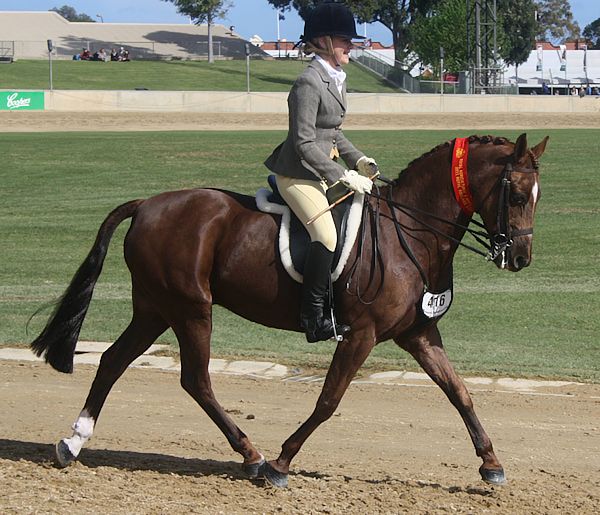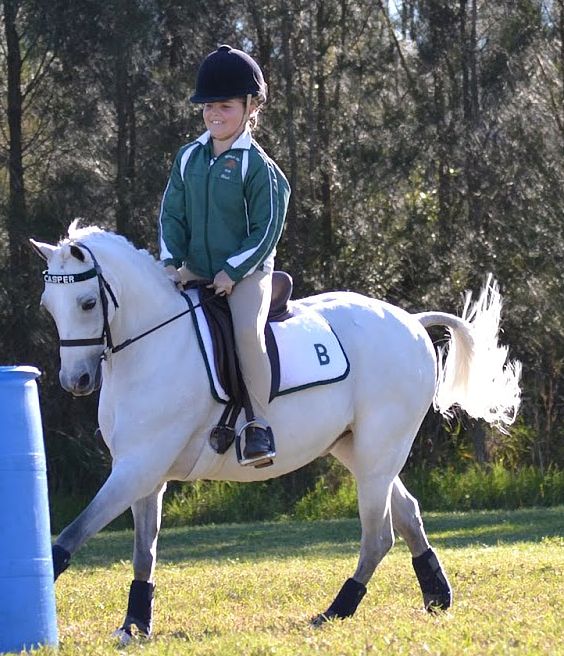The Galloway pony is an extinct horse breed, once native to Scotland and northern England. It was said to have “good looks, a wide, deep chest and a tendency to pace rather than trot.” In the 18th century Galloways were bred in Swaledale, to haul lead ore. They were also used as mounts for boarder raids and later by cattle drovers for herding their stock.
The Galloway pony heavily influenced the Newfoundland pony, the Highland Pony, and the Fell pony of England. Those that have a considerable portion of the old blood, are easily distinguished, by their smallness of head and neck, and cleanness of bone.
The Galloway eventually died out through crossbreeding because its crossbred progeny were such useful animals, much like the Narragansett Pacer breed of Rhode Island.

Because they came from difficult terrain and harsh weather conditions these ponies were robust, efficient and able to travel long distances in unforgiving conditions. However, the Galloway was not well suited to farm work so they were crossbred to produce a more versatile animal. This crossbreeding polluted their pure lines and was instrumental in their decline.
By the 18th century the breed began to be absorbed into the handsome Fell pony which is considered to possess many of the Galloway physical characteristics. Their bloodlines also contributed to the Dales & Highland ponies and even the Thoroughbred lines are thought to have some Galloway blood – prior to the introduction of the three foundation sires.
The average height of the Galloway Pony was 13 – 14 hands. The name of Galloway is sometimes given to horses of an intermediate size between the pony and the full-sized horse, whatever may be the breed. Today, the term “Galloway” is used in Australia to describe horses between 14 and 15 hands (56 and 60 inches, 142 and 152 cm) tall.
The original Galloways were usually black, brown, or bright bay, with black points on the legs, although they occasionally were white. They were much celebrated as excellent, speedy, and steady roadsters; very sure footed, and, on that account, invaluable in travelling over rugged and mountainous districts.
The beauty and spirit of the galloway was supposed to have arisen from the breed having been the produce of the Spanish jennets, that escaped from the wreck of the Invincible Armada; and these, crossed with Scottish horses. However, some Scotlanders claim they were providing Galloway ponies to Edward the First long before this wreck occurred.

Extraordinary Equestrian Feats of the Galloway.
1701. In the year 1701, Mr Sinclair, a gentleman of Kirby Lonsdale, in Cumberland, for a wager of five hundred guineas, rode a galloway of his, the Swift, at Carlisle, a thousand miles in a thousand successive hours.
1753. Sir Charles Turner, Bart., of Berkleathem, made a match with the Earl of March, (afterwards Duke of Queensberry,) for four thousand guineas a-side, to be performed on the Fell, near Richmond, in Yorkshire.
The conditions of the match were, that Sir Charles Turner should ride ten miles within the hour, in which he was to take thirty leaps, each leap to be one yard, one quarter and seven inches high. Sir Charles performed it upon a galloway, to the astonishment of every person present, in forty-six minutes and fifty-nine seconds.
1754. In this year, Mr Croker’s galloway went one hundred miles a-day for three successive days, over the course at Newmarket, by which he was not at all distressed.
1802. A chestnut galloway, belonging to W. Porter, Esq. of Shepperton, started at four a. m., on April 8th, 1802, from Staines, in Middlesex, to go a hundred miles in twelve successive hours, which it performed in eleven hours and thirty-six minutes, with great ease. The ground chosen on this occasion was Sunbury Common.
In 1814, a galloway performed a much greater feat than anything mentioned by Dr Anderson. He started from London along with the Exeter mail, and, notwithstanding the numerous changes of horses, and the very rapid driving, he reached Exeter a quarter of an hour before it; thus performing the astonishing distance of one hundred and seventy-two miles, at an average of about nine miles an hour. The experiment was a brutal one, and fatal to the future energy of this hardy creature, which, with good treatment, might have been long an invaluable servant. Twelve months after this astonishing feat, he was seen sprained, wind-galled, and ring-boned, exhibiting a picture of the utmost wretchedness, brought on by the barbarous inhumanity of man.
1822. A match over a two-mile piece of turf, in Ashford Park, near Romford, in August, 1822, on which at least five hundred sovereigns were pending, caused much sport. A Mr Goodchild undertook to ride first a galloway on the trot, thirteen miles, in one hour, and next a horse in another hour; and to complete the twenty-six miles, within two hours from the time of starting. The galloway performed the distance well in three minutes within the given time, and Mr Goodchild mounted the horse, and won the match, with forty-nine seconds to spare.
1822. In November, a match was made to do eight miles in half an hour, over a two-mile circle, in Ashton Park, for three hundred sovereigns, with a galloway, under fourteen hands, belonging to Mr Furzeman. This was won easily, with more than two minutes to spare. Betting was five to two against his winning.
